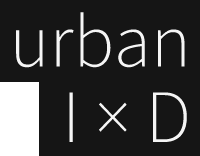To round off our UrbanIxD Conversation this week Tobias Revell, Manu Fernandez and Han Pham will be participating in a live TweetChat on Friday 27th June 2014.
Prepare your Twitter questions for them using the hashtag #UIxD
To round off our UrbanIxD Conversation this week Tobias Revell, Manu Fernandez and Han Pham will be participating in a live TweetChat on Friday 27th June 2014.
Prepare your Twitter questions for them using the hashtag #UIxD
Manu Fernandez:
1. Tobias´s contribution points out, among other things, a crucial issue on urban challenges related to equality. The litany of an urbanizing world has been spectacularized and designing project in the urban context may be fooled into acritical approaches that do not consider conflicts and clashes.
Han Pham: Pirates in My Hood. In my East London neighborhood, home to the wild and hip, the diverse cacophony of the Ridley Road market where butcher stalls jostle with colorful bolts of Nigerian fabric, a ship has moored – a pirate ship. Unabashedly, right there on the high street – close enough to an organic grocery and within winking distance of a Mexican cantina.
Tobias Revell: Like Manu, I have to start with UrbanIxD. This was, for me, the first confluence of those words, particularly the curious ‘x.’ I’ve taught and studied interaction design but to me it has always been a broad and playful field, not the concerned and critical operation of UrbanIxD: A set of tools rather than an ideology or political construct that when not cynically deployed as marketing fodder most often occurs as gimmicky side shows gripping the shirt-tails of 90’s media art.
Manu Fernandez: I must start with my own personal experience involved in the UrbanIxD project activities, as it has been one of the first times I work on a direct link with interaction design as a field. Coming from a background on urban policies, sustainability and civic engagement projects, I found myself in a challenging position, as if I was entering an uncharted territory to me. What can I bring to the table? What is this field all about?
June 2014: #urbanixdconversation
And thank you to our distinguished guests, Tobias, Manu and Han! (more about them below) Over the next ten days or so we will be discussing the character and relevance of the emerging field of urban interaction design (or "urban ixd").
I would like to ask you: How do you see urban interaction design as a field, and how do you yourself relate to it, if at all? Is it a necessary field?
The background is the increasing number of ways in which cities are being shaped by digital technologies, media and materials. You have been joining this conversation as part of the UrbanIxD project, and the specific occasion now is the book Urban Interaction Design: Towards City Making which was published (free online) last week.
In this book, the eight co-authors, who come from many different backgrounds, establish what they propose as the FOUNDATIONS of urban ixd, and then they point to five TRENDS which they see as central to the field. The five trends are: Amateur Professionals Reshaping Cities, Rethinking City-Making Institutions, Urban Product and Platform Reciprocity, Sharing Tools for Sharing, Designing for Digital Ownership in Cities.
The core tenet is that a confluence of fields is happening out of necessity, and that the trends manifest themselves through activities and people working together. The book uses a wide variety of cases from cities and organizations around the world to draw up a picture of urban ixd. The outcome traces an overall outline of emerging city making practices which in some ways are challenging established urban planning.
For further information, see these three diagrams from the book which illustrate (1) the overall confluence of approaches with a traditional departure in Technology, Society and Arts, (2) specific disciplines involved, and (3) methods relating to the field of urban ixd.
Martin Brynskov UrbanIxD project partner, Aarhus University

Manu Fernandez is an urban strategist, founder of Human Scale City urban agency and author of Ciudades a Escala Humana blog. As a researcher and urban policy consultant for the last twelve years, he has always been involved in projects relating to local sustainability. He is currently focused on three areas: adaptive urbanism strategies to actívate vacant sites, the intersection of digital and social perspectives of bottom-up smart cities and, the link of social creativity and local economic development. Manu holds a master´s degree in sustainability management and is a graduate in Laws and Economics and is currently working on his PhD on the narrative of smart cities and its impact on public policies.

Tobias Revell was born in a Hampshire town built around a system of roundabouts in late 1986. His first memory involves filling the doors of a Porsche with sand. He holds a BA Hons in Design for Interaction and Moving Image from the London College of Communication and an MA in Design Interactions at the Royal College of Art from which he graduated in July 2012. As well as being an internationally exhibiting artist, he's an associate designer at Superflux, tutor in Design for Interaction and Moving Image at LCC, visiting tutor with MA Design Interactions at the Royal College of Art and a researcher for ARUP's Foresight and Innovation in London.

Han Pham is a Future Cities Anthropologist/Experience Strategist at The Intel Collaborative Research Institute (ICRI Cities). Her focus is the social science layer of designing engaging and sustainable experiences for future cities. She explores “grounded” futures by using anthropology, psychology, and behavioral science to anticipate, facilitate, and strategise toward future contexts of urban interaction design, particularly trust-seeking, sense-making, and placemaking in cities. She uses a participatory-led approach to explore socio-technical sustainability, emerging cultural techni-quette, and cultural sensing/prototyping.
 UrbanIxD
UrbanIxD
UrbanIxD: Designing Human Interactions in the Networked City